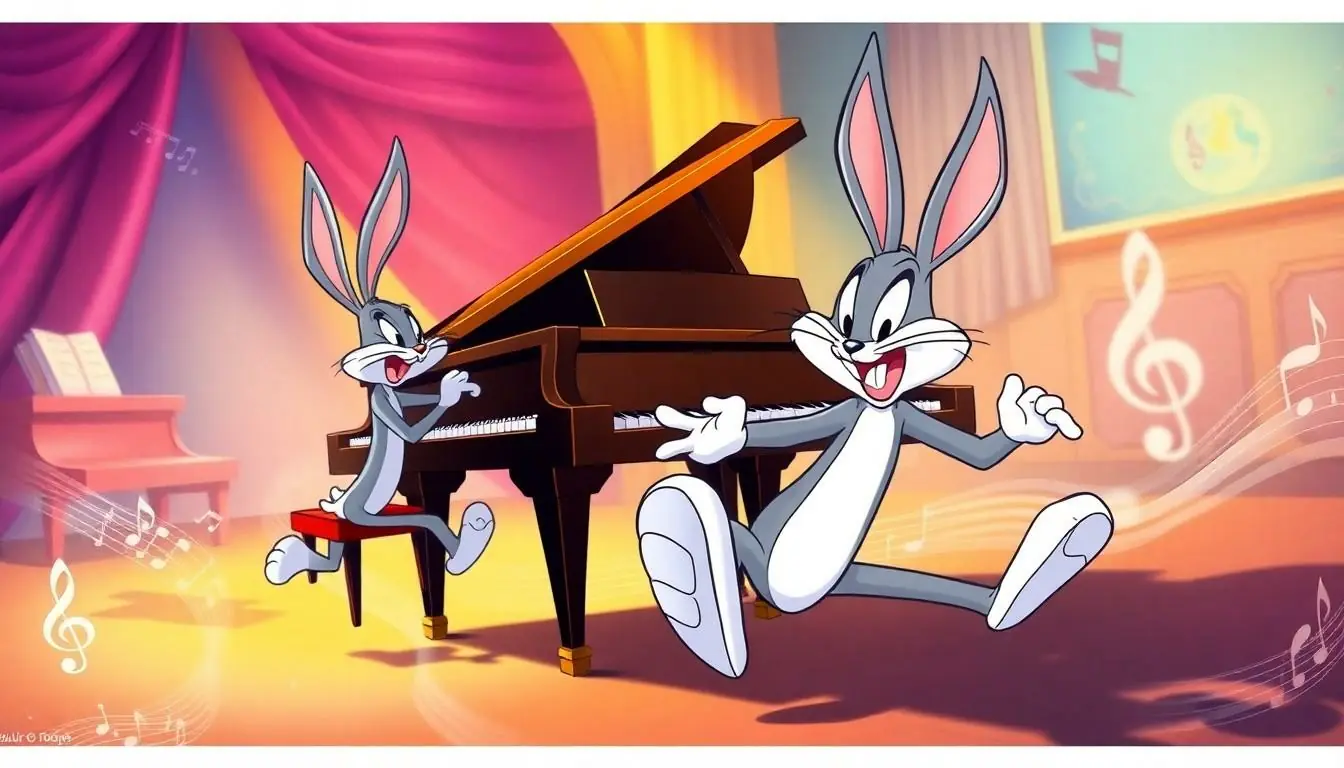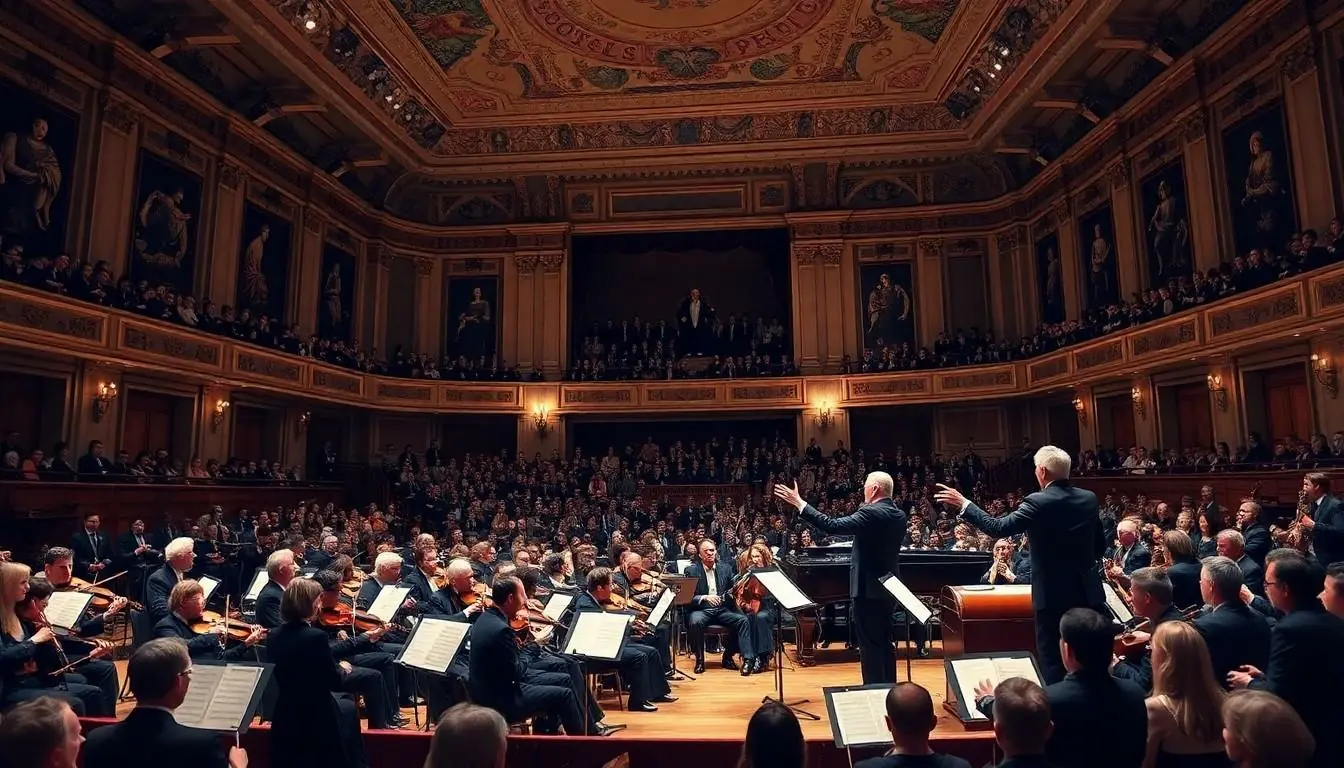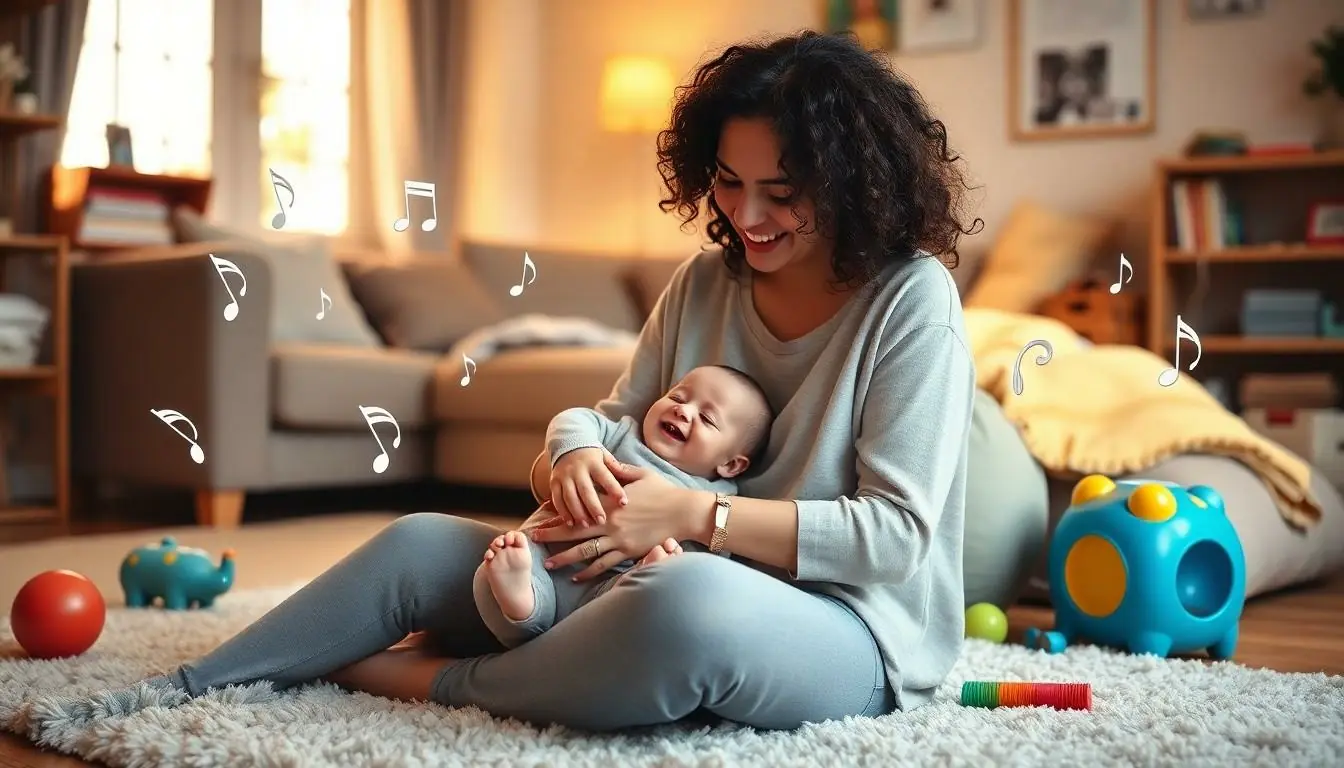Bugs Bunny isn’t just a wisecracking rabbit; he’s also a surprising maestro of classical music. From his iconic antics to the soaring symphonies that accompany them, this beloved character has introduced generations to the world of classical compositions. Who knew that a cartoon character could turn a simple carrot munch into a masterclass in musical appreciation?
Imagine Bugs conducting an orchestra while outsmarting Elmer Fudd—all set to the backdrop of masterpieces by great composers like Wagner and Liszt. This delightful fusion of humor and high art not only entertains but also educates, making classical music accessible and fun. Dive into the whimsical world where laughter meets the elegance of symphonies, and discover why Bugs Bunny deserves a standing ovation in the concert hall of animated legends.
Table of Contents
ToggleThe Significance Of Bugs Bunny In Classical Music
Bugs Bunny’s impact on classical music extends far beyond simple entertainment. He has served as a cultural bridge, connecting younger audiences with classical composers such as Beethoven, Liszt, and Wagner. His irreverent humor and quick wit make timeless compositions engaging and approachable.
Cartoons featuring Bugs Bunny often feature classical pieces as key elements of storytelling. Scenes from Rabbit of Seville showcase specific operatic excerpts, cleverly intertwining animation with music. These segments transform complex masterpieces into relatable moments, making the music memorable.
Many viewers recall first encountering composers through Bugs Bunny’s antics. The character’s smug confidence resonates with audiences while conveying musical themes. This unique approach fosters an appreciation for classical music that might not have developed otherwise.
Bugs showcases the lighter side of classical music, counteracting the stereotype of high art being detached or exclusive. Animated shorts deliver unforgettable moments that inspire a love for orchestration and harmony. His interactions with various musicians create opportunities for learning, allowing for educational experiences wrapped in humor.
The collaborations between Bugs Bunny and classical music have significantly influenced pop culture. Characters such as Elmer Fudd and Daffy Duck appear alongside classical references, reinforcing Bugs’ status as a musical conduit. Esteemed composers like Carl Stalling crafted scores that brought traditional music to the forefront of American entertainment.
Ultimately, Bugs Bunny’s role in classical music remains significant. He continues to shine as an emblem of creativity, encouraging audiences to explore the harmonies and compositions of the great masters. The combination of laughter and love for symphonies illustrates the enduring impact of this animated legend on the appreciation of classical music.
Iconic Classical Pieces Featured


Bugs Bunny features several iconic classical pieces that introduce audiences to the genre. Each composition adds a layer of humor and engagement, making classical music accessible to all.
Hungarian Rhapsody No. 2
Hungarian Rhapsody No. 2 by Franz Liszt grabs attention with its lively melodies and dramatic tempo changes. The cartoon sequence presents a comical chase between Bugs and a piano-playing adversary, illustrating the energetic character of the music. His antics synchronize perfectly with the rapid notes, creating a memorable, laugh-filled experience. Viewers connect the playful imagery with Liszt’s masterpiece, establishing a lasting impression of classical music. The cartoon’s impact on popular culture is undeniable, as many cite this scene as their first exposure to Liszt’s work.
The Barber Of Seville Overture
The Barber of Seville Overture by Gioachino Rossini showcases Bugs as a witty protagonist. This piece accompanies his clever maneuvers while escaping from adversaries. The upbeat tempo and playful themes resonate with audiences, highlighting Bugs’ mischievous personality. The cartoon representation enhances the music’s playful nature, transforming Rossini’s composition into an unforgettable experience. Many people remember this version, often associating it with their first encounter with Rossini’s brilliance. Bugs Bunny’s charm breathes new life into the overture, inviting viewers to explore its musical depths.
Bugs Bunny’s Influence On Pop Culture
Bugs Bunny has made a significant mark on popular culture, intertwining humor with classical music in unique ways.
Impact On Animation
Animation transformed with Bugs Bunny at the forefront. His playful character redefined comedic timing, influencing generations of animators. The blending of slapstick comedy with classical music became a hallmark of Warner Bros’ cartoons. Each short utilized vibrant visuals and meticulous choreography to enhance iconic musical pieces. Shows inspired by Bugs Bunny continue to pay homage to his revolutionary style, affirming his lasting legacy in the animation industry.
Bridging Classical Music With Modern Audiences
Bugs Bunny connects classical music to modern audiences effectively. He introduces legendary composers, like Beethoven and Wagner, through entertaining storylines. Humor serves as a vehicle, making classical compositions accessible and relatable. Millennials and Gen Z often recall discovering classical music while watching Bugs in action. His witty antics transform the perception of high art, encouraging younger viewers to explore the genre further. Each cartoon skit not only entertains but also sparks curiosity about the music behind the laughter.
Notable Composers Associated With Bugs Bunny
Bugs Bunny’s animated legacy intertwines seamlessly with the work of notable composers, enhancing the cultural significance of classical music.
Carl Stalling’s Contributions
Carl Stalling played a pivotal role in integrating classical music into Bugs Bunny cartoons. He composed and arranged music that perfectly synchronized with the on-screen action. Stalling’s knack for timing and humor captivated viewers. His use of classical pieces, such as “The Ride of the Valkyries,” added comedic depth to scenes. Often, the music highlighted the characters’ antics, making moments memorable. Stalling’s innovative techniques set a standard in animation, showcasing how classical music could elevate storytelling.
Other Influential Composers
Other composers also made significant contributions to Bugs Bunny’s musical landscape. Franz Liszt’s “Hungarian Rhapsody No. 2” remains iconic due to its association with Bugs’ playful personality. Likewise, Rossini’s “The Barber of Seville Overture” features prominently, enhancing comedic scenes. These composers, alongside others like Wagner and Tchaikovsky, influenced how audiences perceive classical music through animation. The uplifting melodies and dramatic compositions crafted a unique experience for viewers, bridging the gap between high art and entertainment.
Bugs Bunny’s unique ability to merge humor with classical music has left an indelible mark on both animation and cultural appreciation. Through his antics audiences have discovered the joy of classical compositions that might have otherwise remained unexplored. He’s not just a cartoon character; he’s a bridge connecting generations to the world of high art.
The influence of Bugs Bunny extends beyond entertainment; it inspires curiosity about classical music and invites viewers to engage with renowned composers. His legacy as a musical conduit continues to resonate, proving that laughter and symphonies can coexist beautifully. As audiences reflect on their first encounters with classical music, many will find Bugs Bunny at the center of that experience, forever transforming perceptions of the genre.




